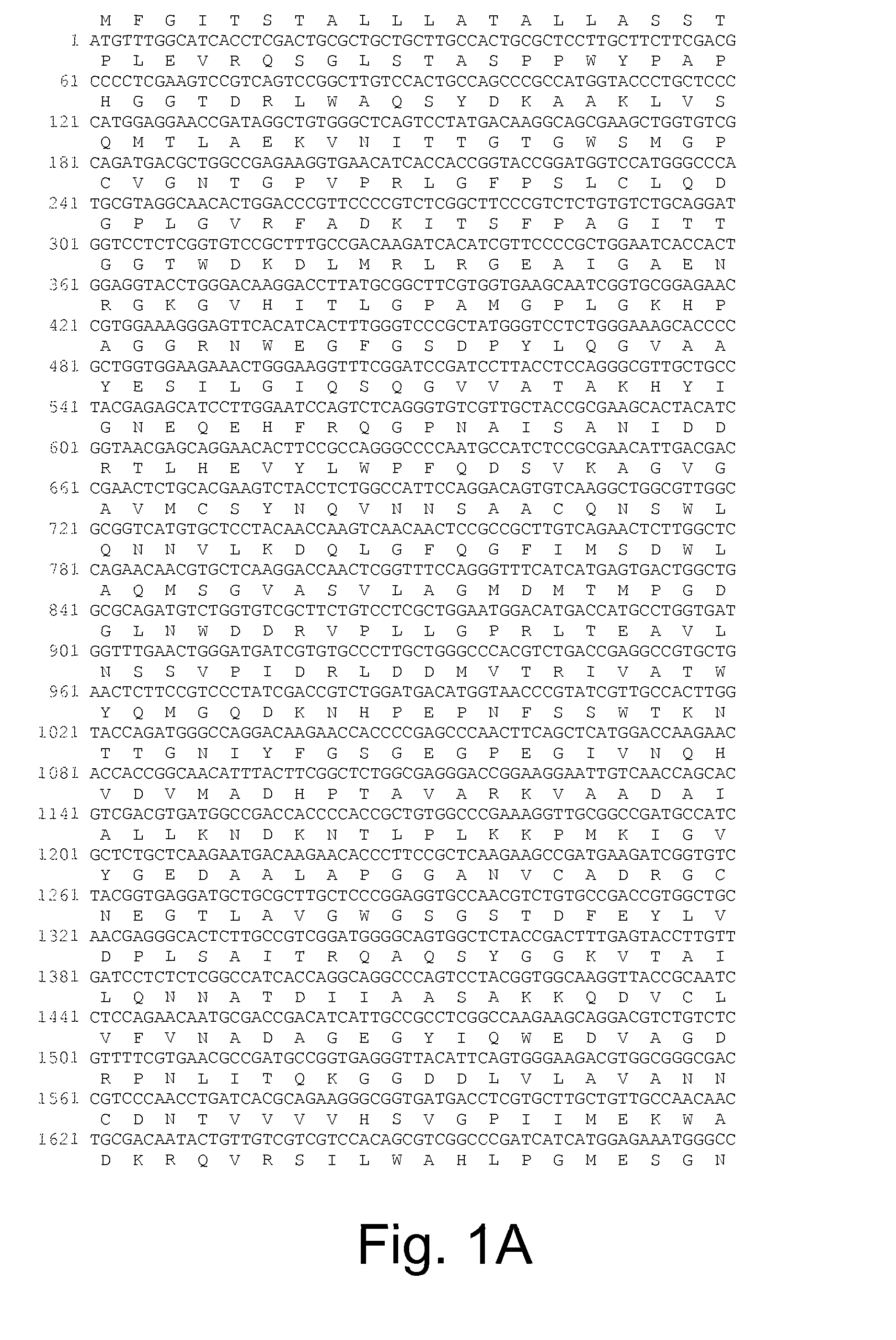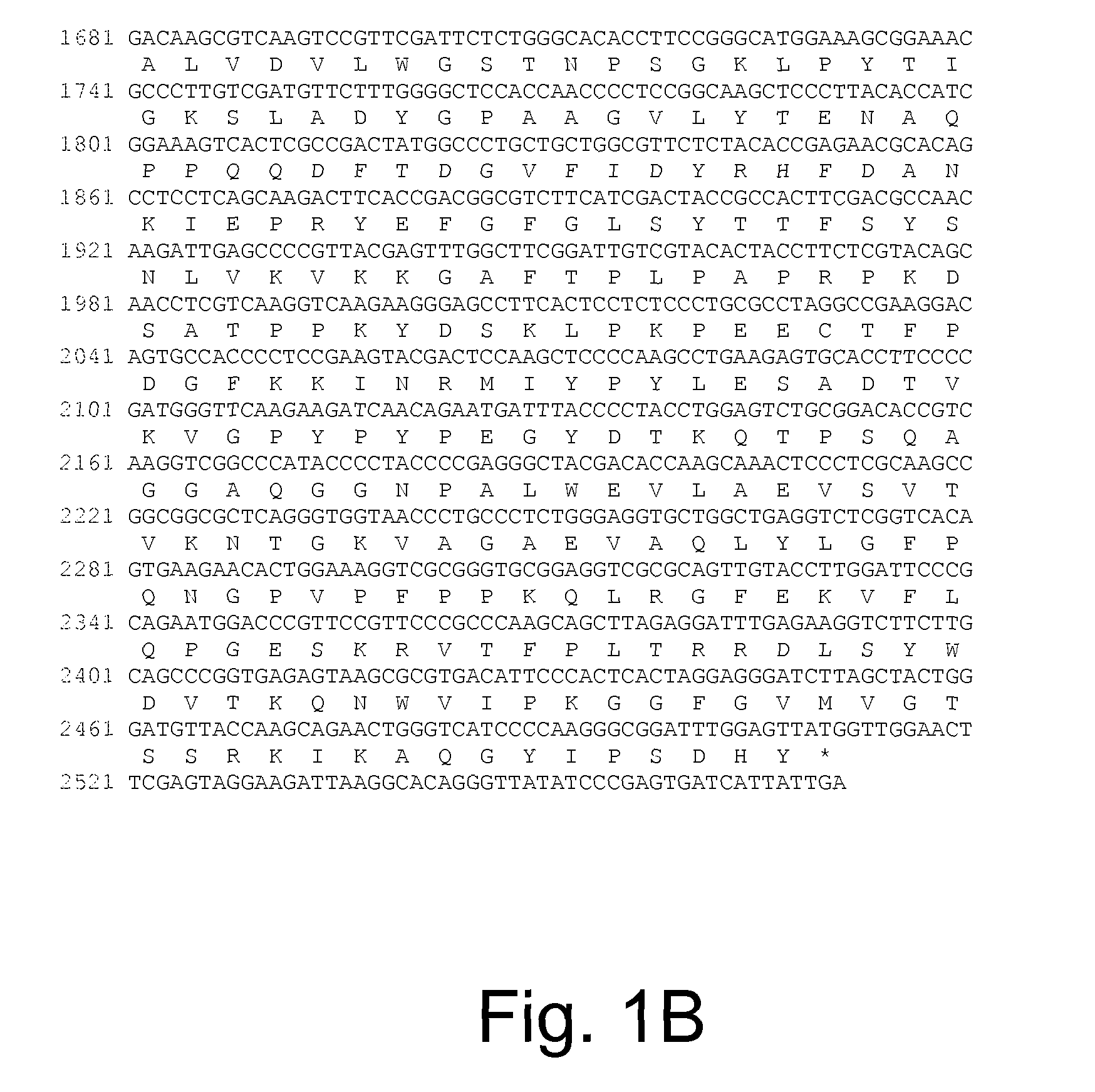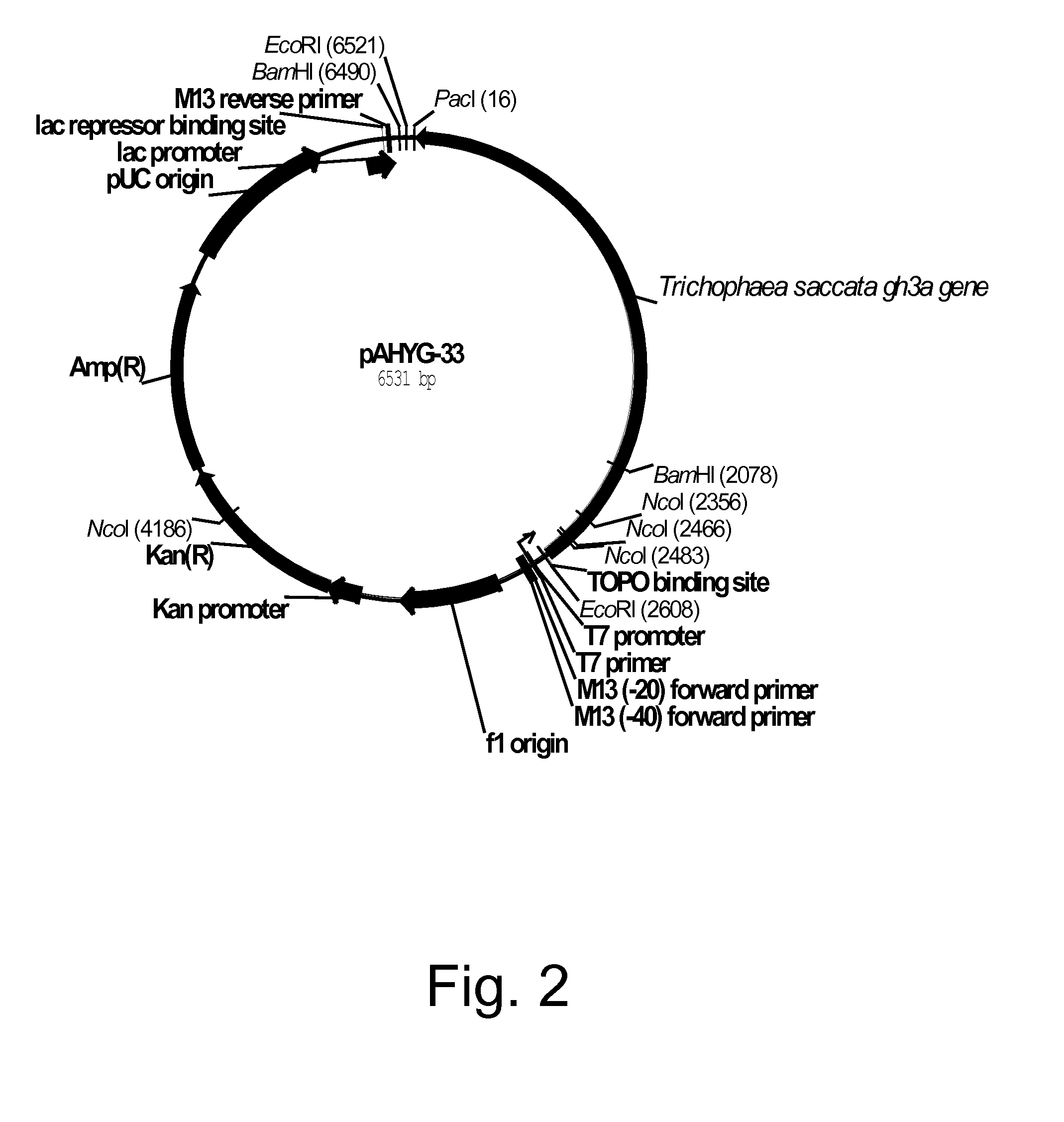Polypeptides having beta-glucosidase activity and polynucleotides encoding same
a technology of beta-glucosidase and polypeptides, which is applied in the field of isolated polypeptides having beta-glucosidase activity and isolated polypeptides encoding the same, can solve the problems of cellobiose accumulation, cellobiose accumulation, and loss of ethanol yield
- Summary
- Abstract
- Description
- Claims
- Application Information
AI Technical Summary
Benefits of technology
Problems solved by technology
Method used
Image
Examples
example 1
Preparation of Trichophaea saccata Strain CBS 804.70 Mycelia for cDNA Library Production
[0369]Trichophaea saccata CBS 804.70 was inoculated onto a PDA plate and incubated for 7 days at 28° C. Several mycelia-PDA agar plugs were inoculated into 750 ml shake flasks containing 100 ml of MEX-1 medium. The flasks were incubated at 37° C. for 9 days with shaking at 150 rpm. The fungal mycelia were harvested by filtration through MIRACLOTH® (Calbiochem, San Diego, Calif., USA) before being frozen in liquid nitrogen. The mycelia were then pulverized into a powder by milling the frozen mycelia together with an equal volume of dry ice in a coffee grinder precooled with liquid nitrogen. The powdered mycelial material was kept at −80° C. until use.
example 2
Trichophaea saccata Strain CBS 804.70 RNA Isolation
[0370]Total RNA was prepared from the frozen, powdered mycelia of Trichophaea saccata CBS 804.70 by extraction with guanidium thiocyanate followed by ultracentrifugation through a 5.7 M CsCl cushion according to Chirgwin et al., 1979, Biochemistry 18: 5294-5299. The polyA enriched RNA was isolated by oligo (dT)-cellulose affinity chromatography according to Aviv et al., 1972, Proc. Natl. Acad. Sci. USA 69: 1408-1412.
example 3
Construction of a Trichophaea saccata Strain CBS 804.70 cDNA Library
[0371]Double stranded cDNA was synthesized according to the general methods of Gubler and Hoffman, 1983, Gene 25: 263-269; Sambrook, J., Fritsch, E. F., and Maniantis, T. Molecular cloning: A Laboratory Manual, 2nd ed., 1989, Cold Spring Harbor Laboratory, Cold Spring Harbor, N.Y.; and Kofod et al., 1994, J. Biol. Chem. 269: 29182-29189, using a polyA-Not I primer (Promega Corp., Madison, Wis., USA). After synthesis, the cDNA was treated with mung bean nuclease, blunt ended with T4 DNA polymerase, and ligated to a 50-fold molar excess of Eco RI adaptors (Invitrogen Corp., Carlsbad, Calif., USA). The cDNA was cleaved with Not I and size fractionated by 0.8% agarose gel electrophoresis using 44 mM Tris base, 44 mM boric acid, 0.5 mM EDTA (TBE) buffer. The fraction of cDNA of 700 bp and larger was excised from the gel and purified using a GFX® PCR DNA and Gel Band Purification Kit (GE Healthcare, United Kingdom) accord...
PUM
| Property | Measurement | Unit |
|---|---|---|
| pH | aaaaa | aaaaa |
| pH | aaaaa | aaaaa |
| pH | aaaaa | aaaaa |
Abstract
Description
Claims
Application Information
 Login to View More
Login to View More - R&D
- Intellectual Property
- Life Sciences
- Materials
- Tech Scout
- Unparalleled Data Quality
- Higher Quality Content
- 60% Fewer Hallucinations
Browse by: Latest US Patents, China's latest patents, Technical Efficacy Thesaurus, Application Domain, Technology Topic, Popular Technical Reports.
© 2025 PatSnap. All rights reserved.Legal|Privacy policy|Modern Slavery Act Transparency Statement|Sitemap|About US| Contact US: help@patsnap.com



